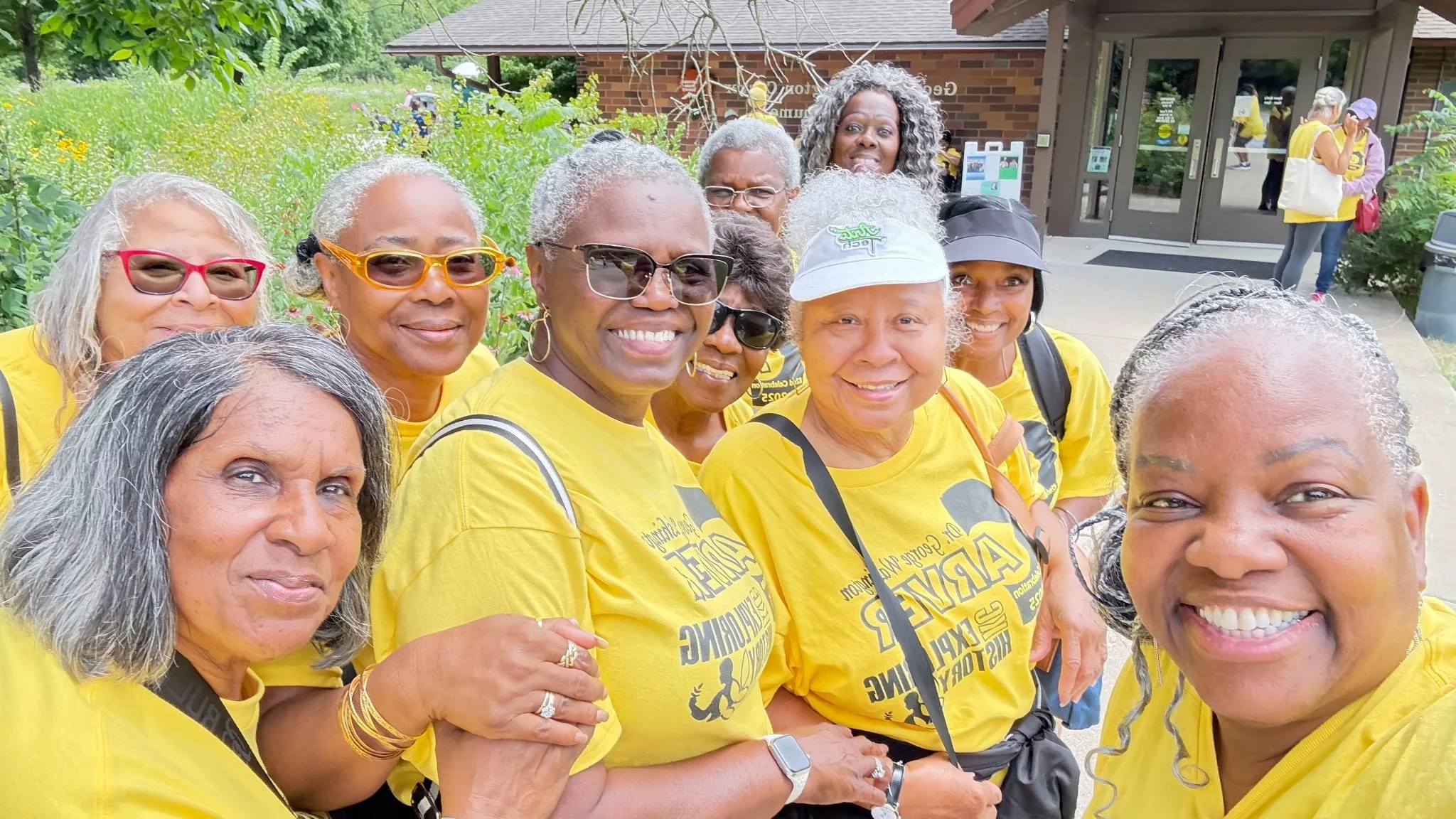Tracing history: Palestine seniors visit boyhood home of George Washington Carver
The modern highway cruiser delivered them, joyously together, like a sleek time machine into Bessie Mays’ farthest memories.
When she and the other travelers from the Palestine Senior Citizens Activity Center wandered out among the preserved history of the boyhood farm of George Washington Carver, familiar feelings rose from inside her, not all of them good.
The members of Palestine had agreed at recent gatherings of their community site council meetings that they wanted opportunities to share meaningful experiences together.
Now here they were, at the Carver National Monument in Diamond, Mo., some 2½ hours south of Kansas City, and Mays was taken back to her childhood growing up the second of 12 children in Greenville, Miss., in the 1950s.
“What I went through, he went through,” Mays said, speaking of the young George Washington Carver.
The park grounds showed the relics of the hard work she and Carver shared — the wash tub and scrubbing board, the cotton sacks. And there were recognitions of the harsh segregation, and the oppression.
“I’m pleased we got to go,” Mays said. “It brought back memories. They told the truth.”
It was a special day — the National Park Service site’s annual Carver Day Celebration celebrating the establishment of the monument 82 years ago — featuring live performances of ragtime and jazz music, special presentations and other meaningful observances of Carver’s legacy.
LINC Caring Communities Coordinator Yolanda Robinson, who has been overseeing what has become a grand revival of the Palestine senior center, got help making the members’ travel desires come true.
City Councilmember Melissa Robinson helped secure the Arrow Stage bus, Yolanda Robinson said, and Carver Birthplace Association Board Member Eric Wells made sure the Kansas City group had a special day.
The efforts were greatly appreciated, said Palestine member Michael Stringer.
“At our site council we said we wanted more education about Black history,” Stringer said. “It meant a lot.”
The travelers got to see the history at the farm and also visited the nearby site of the 1872 Neosho Colored School, where Carver attended and set the foundation for his commitment to education.
To have this special day, and to walk the paths of Black history was satisfying, Stringer said. “It makes you feel like you’re not forgotten.”
By Joe Robertson/LINC writer
Click on the images below to enlarge the pictures




